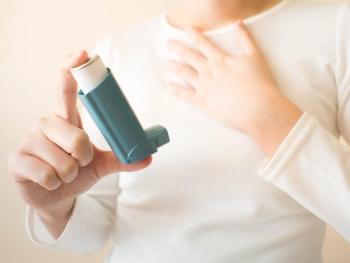
Considering the Effects of Climate Change on Pollen Levels
The effects of complex interactions with pollens, meteorological variables, and air pollutants on the concentration of pollen in a changing climate is still not well understood.
Although most studies of the effects of climate change on aeroallergens include the quantity and allergenicity of pollens, the interactions with pollens, meteorological variables, and air pollutants in the background of a changing planetary environment are still not quite understood, according to a review published in Allergy, Asthma, & Immunology Research.1
In this review, Jae-Won Oh, MD, PhD, FAAAI, from the Department of Pediatrics at Hanyang University Guri Hospital, College of Medicine in Seoul, Korea discusses important factors to consider in predicting and eliminating the risks to human health associated with the effects of climate change o the long-term pollen level trends and emerging viral infections.
Pollen as an aeroallergen and factors in its clinical significance must be considered. As pollen grains can range from 15 to 75 μm, its size can be a factor in pathogenesis of allergic rhinitis, asthma, hypersensitivity pneumonia, and more, especially because the highest dose of these aeroallergens surround the conjunctiva and upper respiratory tract.
While size plays an important role, the concentration of pollen may also affect its potency. Climate and weather can affect the production, release, and bioavailability of allergens due to pollen. Although spring and early summer are often associated with an increase in pollen, weather conditions may affect allergen potency depending upon the development on anthers in plants. “If weather conditions are favorable for early pollination, ripe anthers will release less mature pollens with less allergens,” Oh noted. “Otherwise, when the weather conditions delay the opening of the anthers, more mature pollens with more allergens are released.”
In addition, pollen season in one area may be related to the local flowering season, which may vary depending on the general climate of that region. For example, the main pollination period in a temperate climate is broad, ranging from spring to autumn. “The effect of temperature on pollination is greater in spring- and early summer-flowering plants, whereas pollination of plants that flower in late summer and fall is generally correlated with their photoperiod,” added Oh.
Climate change may be another factor when considering the impact of pollen as an allergen. As more carbon dioxide (CO2) is emitted due to oxidation of carbon sources like fossil fuels, more infra-red radiation is absorbed and the levels of increasing atmospheric CO2 will also cause an increase in the Earth’s surface temperature. An increase in atmospheric CO2 may affect the length of pollen seasons and ultimately increase plant productivity and pollen production. Studies on the effects of elevated CO2 and its relation to increasing pollen production have already produced results suggesting that certain plants, such as common ragweed and oak trees, may already be affected by climate change, yielding higher levels of allergenic protein content. However, Oh did note that “the actual level of elevated allergy risk is difficult to predict.”
While risk prediction is still unclear, lengthened pollen seasons can result in increased duration of exposure, potential for more sensitization, longer periods of allergic disease, and possibly more severe symptoms. Some studies have already suggested a positive correlation between the increase in global temperature and seasonal duration/pollen concentration for many allergenic plan species in the northern hemisphere.
Sensitization is less pronounced in individuals reactive to only one type of pollen; however, different pollens may be released at different times, which can impact exposure duration in affected individuals. One study noted in the review, found that the longer pollen seasons were positively correlated with pediatric sensitization rates to major tree pollens. “With climate change, a continuous increase in the concentrations of tree pollens and thus in sensitization rates, especially in younger children, can be expected,” Oh added.
Young children are also at an increased risk for developing seasonal respiratory viruses, as pollen exposure may weaken immunity. One study in South Korea found that asthma in school-aged children was exacerbated upon exposure to seasonal environmental factors including ozone, rhinovirus, and tree pollen. Other studies also found associations between susceptibility to respiratory viruses and exposure to pollen.
Pollen calendars and forecasts providing reliable aerobiological predictions for pollen trends may be essential for patients with pollen allergies. Some forecast models for patient exposure to allergenic pollens include regional regression models, probability-regression models, probability-machine learning models, and pollen dispersal models, which are elaborated in the original review.
“Looking to the future, it is yet unknown whether complex interactions among pollens, meteorological variables, and air pollutants may play a role in a changing planetary environment,” Oh noted. “If we consider the huge effect of climate change on the long-term trends of airborne pollen levels and emerging viral infections, it is of utmost importance to forecast and warn the associated risk for human health in future pandemics and take appropriate measures to reduce it as much as possible.”
Reference
1. Oh JW. Pollen allergy in a changing planetary environment. Allergy Asthma Immunol Res. 2022;14(2):168-181. doi:10.4168/aair.2022.14.2.168
Newsletter
Pharmacy practice is always changing. Stay ahead of the curve with the Drug Topics newsletter and get the latest drug information, industry trends, and patient care tips.















































































































